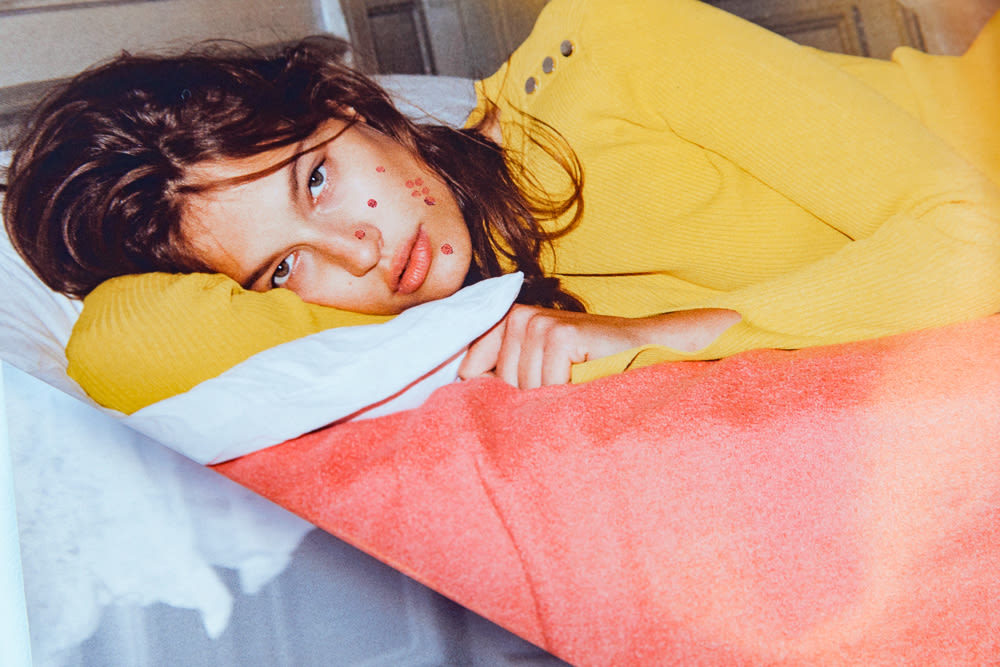Online visual research for “different types of pimples” is not pleasant. You’ll find yourself inundated with photos and videos that'll leave you with an urge to vomit or some newfound level of trypophobia. The disgust is kind of silly given that pimples are something nearly every human gets—even those not prone to breakouts. But close-up shots of strangers' clogged pores can be a little nauseating, which is why I won’t be using any of those kinds of photos here. And you can abandon your search engines altogether—or I mean, that's up to you—because I’ve broken facts about pimples down into the six most common types using only words. For your sake, this lesson will be entirely free of visuals.
Anyway. The reality is that I personally spent the summer watching what felt like endless varieties of breakouts happen to my face. Now that the weather’s calmed down, the breakouts have too. But the memories are there, alongside new, sickening pictures I found on the internet of different types of pimples. Do me a favor and read about them here:
Whiteheads
You know what these are. They are exactly what they sound like: Little baby packs of buildup that sit on top of your skin. Sebum and dead skin cells in one tiny, white package. Cute! Medically, a whitehead can be called a closed comedo. (All types of pimples start as comedones.) Yes, whiteheads count as pimples, and they frequently show up on oilier skin types. They can pretty easily be combated with chemical exfoliation and thorough cleansing of the skin.
Blackheads
Blackheads are "plugs" (vomit) of sebum, skin cell buildup, and bacteria. Kind of like whiteheads. Only, in the case of a blackhead, the comedo is open and the oil has oxidized, making it a darker color. You'll treat these similarly to whiteheads, though—regular, thorough cleansing and chemical exfoliation. Other products like clay masks can help, and if you're extra prone to blackheads, try making sure all the products you use are non-comedogenic. Pore strips can be controversial, but facialist Jordana Mattioli says they can help blackheads if you use them in moderation.
Papules
A papule is technically any small, raised bump on the skin. It's often part of a grouping of other papules that form a rash (i.e. dermatatis, allergic reactions, eczema). In terms of acne, it's a bump that's red in color and swollen with inflamation. Papules are more painful than whiteheads or blackheads, but not as bad as nodules or cysts. You can treat them with drying lotions or spot treatments; they respond pretty well to ingredients like BPO.
Pustules
Does pustule win for grossest name? I think so! A pustule is what you're most likely to think of when you picture a pimple. It's a zit that has come to a head, forming a white, pus-filled bubble on top. Yum. While this might sound like it would fit the description of "whitehead," a pustule is different: A whitehead is simply a plugged hair follicle, while a pustule is inflamed and full of pus. A full-on zit. These are the kinds of pimples even your facialist will say you can pop. They should come easily, meaning popping them is unlikely to leave you with a scar. To get your zit to this point, try wetting a clean washcloth with hot water and holding it to the spot. It helps draw the infection to the surface. Once you've popped it or allowed the pustule to pop on its own, try to keep it covered (pimple patch it!) until it has healed over.
Cysts
"Nooooooooooo," is what I scream in front of my bathroom mirror anytime I feel a cystic pimple developing. That's because cysts are much worse than regular pimples. They lie deep within the skin, are often caused by hormones, and occur when the pores become blocked and lead to infection. This is what makes them so painful and slow to heal. Your best bet is to A) keep the area clean, B) chemically exfoliate, and C) fight the infection. You might see a dermatologist for a cortisone injection, or you could try putting Renée Rouleau's Anti Bump Solution on it twice a day. Jordana also recommends ice packing cysts, because the cold will restrict the blood vessels and reduce inflammation as a result. If you get regularly occuring cystic acne, retin-A and other more serious treatments can help. Contrary to popular belief (apparently, because I saw it on the internet), cystic pimples are not caused by masturbation OR chocolate. Now you know!
Nodules
Like cysts, nodular pimples are one of the most severe forms of acne. They're slightly different in that they are not filled with pus like cystic pimples are. Instead, they form a hard bump deep within the skin and feel painful at the surface. Nodules don't always become red—they can match your skintone—but can take weeks to go away. Nodular acne usually needs pretty intensive treatments like antibiotics and other oral medications, so visiting the dermatologist is probably your best bet to finding a solution.
—Anna Jube
Photo via ITG.

